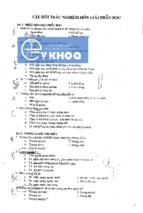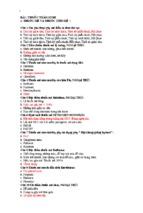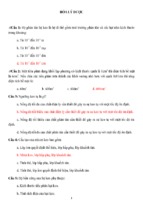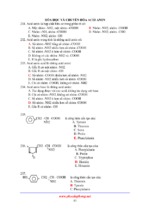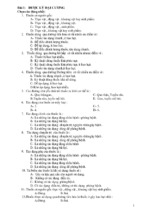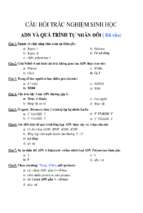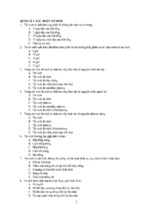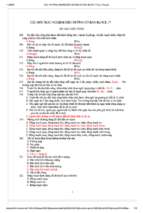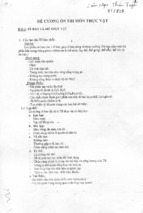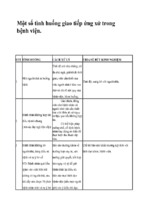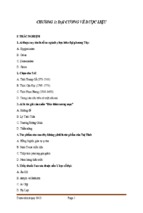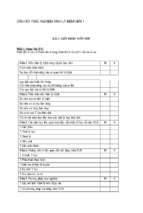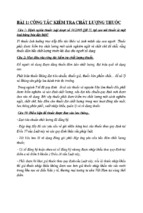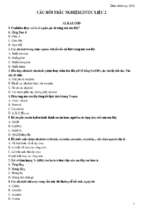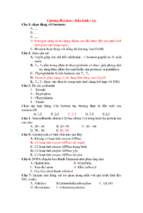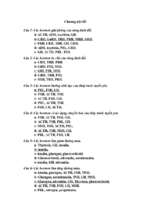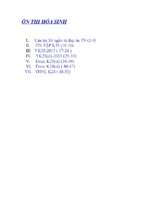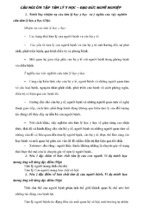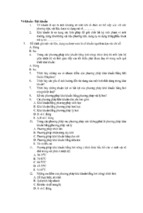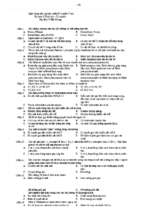At a Glance
1
Fundamentals and Cell Physiology
2
Nerve and Muscle, Physical Work
3
Autonomic Nervous System (ANS)
4
Blood
5
Respiration
6
Acid–Base Homeostasis
7
Kidneys, Salt, and Water Balance
8
Cardiovascular System
9
Thermal Balance and Thermoregulation
10
Nutrition and Digestion
11
Hormones and Reproduction
12
Central Nervous System and Senses
13
Appendix
Further Reading
Index
Despopoulos, Color Atlas of Physiology © 2003 Thieme
All rights reserved. Usage subject to terms and conditions of license.
2
42
78
88
106
138
148
186
222
226
266
310
372
391
394
II
Despopoulos, Color Atlas of Physiology © 2003 Thieme
All rights reserved. Usage subject to terms and conditions of license.
Color Atlas
of Physiology
5th edition, completely revised
and expanded
Agamemnon Despopoulos, M.D.
Professor
Formerly: Ciba Geigy
Basel
Stefan Silbernagl, M.D.
Professor
Head of Department
Institute of Physiology
University of Wuerzburg
Wuerzburg, Germany
186 color plates by
Ruediger Gay and
Astried Rothenburger
Thieme
Stuttgart · New York
Despopoulos, Color Atlas of Physiology © 2003 Thieme
All rights reserved. Usage subject to terms and conditions of license.
Library of Congress Cataloging-in-Publication
Data
is available from the publisher
1st German edition 1979
2nd German edition 1983
3rd German edition 1988
4th German edition 1991
5th German edition 2001
1st English edition 1981
2nd English edition 1984
3rd English edition 1986
4th English edition 1991
1st Dutch edition 1981
2nd Dutch edition 2001
1st Italian edition 1981
2nd Italian edition 2001
1st Japanese edition 1982
2nd Japanese edition 1992
1st Czech edition 1984
2nd Czech edition 1994
1st French edition 1985
2nd French edition 1992
3rd French edition 2001
1st Turkish edition 1986
2nd Turkish edition 1997
1st Greek edition 1989
1st Chinese edition 1991
1st Polish edition 1994
1st Hungarian edition 1994
2nd Hungarian edition 1996
1st Indonesion edition 2000
1st Spanish edition 1982
2nd Spanish edition 1985
3rd Spanish edition 1994
4th Spanish edition 2001
This book is an authorized translation of the
5th German edition published and copyrighted 2001 by Georg Thieme Verlag, Stuttgart, Germany.
Title of the German edition:
Taschenatlas der Physiologie
Translated by Suzyon O’Neal Wandrey, Berlin,
Germany
Illustrated by Atelier Gay + Rothenburger, Sternenfels, Germany
! 1981, 2003 Georg Thieme Verlag
Rüdigerstraße 14, D-70469 Stuttgart, Germany
http://www.thieme.de
Thieme New York, 333 Seventh Avenue,
New York, N.Y. 10001, U.S.A.
http://www.thieme.com
Cover design: Cyclus, Stuttgart
Typesetting by: Druckhaus Götz GmbH,
Ludwigsburg, Germany
Printed in Germany by: Appl Druck
GmbH & Co. KG, Wemding, Germany
IV
ISBN 3-13-545005-8 (GTV)
ISBN 1-58890-061-4 (TNY)
1 2 3 4 5
Important Note: Medicine is an ever-changing
science undergoing continual development.
Research and clinical experience are continually expanding our knowledge, in particular
our knowledge of proper treatment and drug
therapy. Insofar as this book mentions any dosage or application, readers may rest assured
that the authors, editors, and publishers have
made every effort to ensure that such references are in accordance with the state of
knowledge at the time of production of the
book.
Nevertheless, this does not involve, imply,
or express any guarantee or responsibility on
the part of the publishers in respect to any dosage instructions and forms of applications
stated in the book. Every user is requested to
examine carefully the manufacturers’ leaflets
accompanying each drug and to check, if
necessary in consultation with a physician or
specialist, whether the dosage schedules mentioned therein or the contraindications stated
by the manufacturers differ from the statements made in the present book. Such examination is particularly important with drugs
that are either rarely used or have been newly
released on the market. Every dosage schedule
or every form of application used is entirely at
the user’s own risk and responsibility. The authors and publishers request every user to report to the publishers any discrepancies or
inaccuracies noticed.
Some of the product names, patents, and
registered designs referred to in this book are
in fact registered trademarks or proprietary
names even though specific reference to this
fact is not always made in the text. Therefore,
the appearance of a name without designation
as proprietary is not to be construed as a representation by the publisher that it is in the
public domain.
This book, including all parts thereof, is legally protected by copyright. Any use, exploitation, or commercialization outside the narrow
limits set by copyright legislation, without the
publisher’s consent, is illegal and liable to prosecution. This applies in particular to photostat
reproduction, copying, mimeographing or
duplication of any kind, translating, preparation of microfilms, and electronic data processing and storage.
Despopoulos, Color Atlas of Physiology © 2003 Thieme
All rights reserved. Usage subject to terms and conditions of license.
Preface to the Fifth Edition
The base of knowledge in many sectors of physiology has grown considerably in magnitude
and in depth since the last edition of this book
was published. Many advances, especially the
rapid progress in sequencing the human genome and its gene products, have brought
completely new insight into cell function and
communication. This made it necessary to edit
and, in some cases, enlarge many parts of the
book, especially the chapter on the fundamentals of cell physiology and the sections on
neurotransmission, mechanisms of intracellular signal transmission, immune defense, and
the processing of sensory stimuli. A list of physiological reference values and important formulas were added to the appendix for quick
reference. The extensive index now also serves
as a key to abbreviations used in the text.
Some of the comments explaining the connections between pathophysiological principles and clinical dysfunctions had to be slightly truncated and set in smaller print. However,
this base of knowledge has also grown considerably for the reasons mentioned above. To
make allowances for this, a similarly designed
book, the Color Atlas of Pathophysiology
(S. Silbernagl and F. Lang, Thieme), has now
been introduced to supplement the wellestablished Color Atlas of Physiology.
I am very grateful for the many helpful comments from attentive readers (including my
son Jakob) and for the welcome feedback from
my peers, especially Prof. H. Antoni, Freiburg,
Prof. C. von Campenhausen, Mainz, Dr. M. Fischer, Mainz, Prof. K.H. Plattig, Erlangen, and
Dr. C. Walther, Marburg, and from my colleagues and staff at the Institute in Würzburg. It
was again a great pleasure to work with Rüdiger Gay and Astried Rothenburger, to whom I
am deeply indebted for revising practically all
the illustrations in the book and for designing a
number of new color plates. Their extraordinary enthusiasm and professionalism played a
decisive role in the materialization of this new
edition. To them I extend my sincere thanks. I
would also like to thank Suzyon O’Neal Wandrey for her outstanding translation. I greatly
appreciate her capable and careful work. I am
also indebted to the publishing staff, especially
Marianne Mauch, an extremely competent and
motivated editor, and Gert Krüger for invaluable production assistance. I would also like to
thank Katharina Völker for her ever observant
and conscientious assistance in preparing the
index.
I hope that the 5th Edition of the Color Atlas
of Physiology will prove to be a valuable tool for
helping students better understand physiological correlates, and that it will be a valuable reference for practicing physicians and scientists, to help them recall previously learned information and gain new insights in physiology.
Würzburg, December 2002
Stefan Silbernagl*
* e-mail:
[email protected]
Despopoulos, Color Atlas of Physiology © 2003 Thieme
All rights reserved. Usage subject to terms and conditions of license.
V
Preface to the First Edition
In the modern world, visual pathways have
outdistanced other avenues for informational
input. This book takes advantage of the economy of visual representation to indicate the simultaneity and multiplicity of physiological
phenomena. Although some subjects lend
themselves more readily than others to this
treatment, inclusive rather than selective
coverage of the key elements of physiology has
been attempted.
Clearly, this book of little more than 300
pages, only half of which are textual, cannot be
considered as a primary source for the serious
student of physiology. Nevertheless, it does
contain most of the basic principles and facts
taught in a medical school introductory
course. Each unit of text and illustration can
serve initially as an overview for introduction
to the subject and subsequently as a concise
review of the material. The contents are as current as the publishing art permits and include
both classical information for the beginning
students as well as recent details and trends
for the advanced student.
A book of this nature is inevitably derivative, but many of the representations are new
and, we hope, innovative. A number of people
have contributed directly and indirectly to the
completion of this volume, but none more
than Sarah Jones, who gave much more than
editorial assistance. Acknowledgement of
helpful criticism and advice is due also to Drs.
R. Greger, A. Ratner, J. Weiss, and S. Wood, and
Prof. H. Seller. We are grateful to Joy Wieser for
her help in checking the proofs. Wolf-Rüdiger
and Barbara Gay are especially recognized, not
only for their art work, but for their conceptual
contributions as well. The publishers, Georg
Thieme Verlag and Deutscher Taschenbuch
Verlag, contributed valuable assistance based
on extensive experience; an author could wish
for no better relationship. Finally, special
recognition to Dr. Walter Kumpmann for inspiring the project and for his unquestioning
confidence in the authors.
Basel and Innsbruck, Summer 1979
Agamemnon Despopoulos
Stefan Silbernagl
VI
Despopoulos, Color Atlas of Physiology © 2003 Thieme
All rights reserved. Usage subject to terms and conditions of license.
From the Preface to the Third Edition
The first German edition of this book was already in press when, on November 2nd, 1979,
Agamennon Despopoulos and his wife, Sarah
Jones-Despopoulos put to sea from Bizerta, Tunisia. Their intention was to cross the Atlantic
in their sailing boat. This was the last that was
ever heard of them and we have had to abandon all hope of seeing them again.
Without the creative enthusiasm of Agamennon Despopoulos, it is doubtful whether
this book would have been possible; without
his personal support it has not been easy to
continue with the project. Whilst keeping in
mind our original aims, I have completely revised the book, incorporating the latest advances in the field of physiology as well as the welcome suggestions provided by readers of the
earlier edition, to whom I extend my thanks for
their active interest.
Würzburg, Fall 1985
Stefan Silbernagl
Dr. Agamemnon Despopoulos
Born 1924 in New York; Professor of Physiology at the
University of New Mexico. Albuquerque, USA, until 1971;
thereafter scientific adviser to CIBA-GEIGY, Basel.
VII
Despopoulos, Color Atlas of Physiology © 2003 Thieme
All rights reserved. Usage subject to terms and conditions of license.
VIII
Despopoulos, Color Atlas of Physiology © 2003 Thieme
All rights reserved. Usage subject to terms and conditions of license.
Table of Contents
1
Fundamentals and Cell Physiology
2
The Body: an Open System with an Internal Environment · · · 2
Control and Regulation · · · 4
The Cell · · · 8
Transport In, Through, and Between Cells · · · 16
Passive Transport by Means of Diffusion · · · 20
Osmosis, Filtration, and Convection · · · 24
Active Transport · · · 26
Cell Migration · · · 30
Electrical Membrane Potentials and Ion Channels · · · 32
Role of Ca2+ in Cell Regulation · · · 36
Energy Production and Metabolism · · · 38
2
Nerve and Muscle, Physical Work
42
Neuron Structure and Function · · · 42
Resting Membrane Potential · · · 44
Action Potential · · · 46
Propagation of Action Potentials in Nerve Fiber · · · 48
Artificial Stimulation of Nerve Cells · · · 50
Synaptic Transmission · · · 50
Motor End-plate · · · 56
Motility and Muscle Types · · · 58
Motor Unit of Skeletal Muscle · · · 58
Contractile Apparatus of Striated Muscle · · · 60
Contraction of Striated Muscle · · · 62
Mechanical Features of Skeletal Muscle · · · 66
Smooth Muscle · · · 70
Energy Supply for Muscle Contraction · · · 72
Physical Work · · · 74
Physical Fitness and Training · · · 76
3
Autonomic Nervous System (ANS)
78
Organization of the Autonomic Nervous System · · · 78
Acetylcholine and Cholinergic Transmission · · · 82
Catecholamine, Adrenergic Transmission and Adrenoceptors · · · 84
Adrenal Medulla · · · 86
Non-cholinergic, Non-adrenergic Transmitters · · · 86
IX
Despopoulos, Color Atlas of Physiology © 2003 Thieme
All rights reserved. Usage subject to terms and conditions of license.
4
Blood
88
Composition and Function of Blood · · · 88
Iron Metabolism and Erythropoiesis · · · 90
Flow Properties of Blood · · · 92
Plasma, Ion Distribution · · · 92
Immune System · · · 94
Hypersensitivity Reactions (Allergies) · · · 100
Blood Groups · · · 100
Hemostasis · · · 102
Fibrinolysis and Thromboprotection · · · 104
5
Respiration
106
Lung Function, Respiration · · · 106
Mechanics of Breathing · · · 108
Purification of Respiratory Air · · · 110
Artificial Respiration · · · 110
Pneumothorax · · · 110
Lung Volumes and their Measurement · · · 112
Dead Space, Residual Volume, and Airway Resistance · · · 114
Lung–Chest Pressure—Volume Curve, Respiratory Work · · · 116
Surface Tension, Surfactant · · · 118
Dynamic Lung Function Tests · · · 118
Pulmonary Gas Exchange · · · 120
Pulmonary Blood Flow, Ventilation–Perfusion Ratio · · · 122
CO2 Transport in Blood · · · 124
CO2 Binding in Blood · · · 126
CO2 in Cerebrospinal Fluid · · · 126
Binding and Transport of O2 in Blood · · · 128
Internal (Tissue) Respiration, Hypoxia · · · 130
Respiratory Control and Stimulation · · · 132
Effects of Diving on Respiration · · · 134
Effects of High Altitude on Respiration · · · 136
Oxygen Toxicity · · · 136
6
Acid–Base Homeostasis
138
pH, pH Buffers, Acid–Base Balance · · · 138
Bicarbonate/Carbon Dioxide Buffer · · · 140
Acidosis and Alkalosis · · · 142
Assessment of Acid–Base Status · · · 146
7
X
Kidneys, Salt, and Water Balance
Kidney Structure and Function · · · 148
Renal Circulation · · · 150
Glomerular Filtration and Clearance · · · 152
Transport Processes at the Nephron · · · 154
Reabsorption of Organic Substances · · · 158
Despopoulos, Color Atlas of Physiology © 2003 Thieme
All rights reserved. Usage subject to terms and conditions of license.
148
Excretion of Organic Substances · · · 160
Reabsorption of Na+ and Cl– · · · 162
Reabsorption of Water, Formation of Concentrated Urine · · · 164
Body Fluid Homeostasis · · · 168
Salt and Water Regulation · · · 170
Diuresis and Diuretics · · · 172
Disturbances of Salt and Water Homeostasis · · · 172
The Kidney and Acid–Base Balance · · · 174
Reabsorption and Excretion of Phosphate, Ca2+ and Mg2+ · · · 178
Potassium Balance · · · 180
Tubuloglomerular Feedback, Renin–Angiotensin System · · · 184
8
Cardiovascular System
186
Overview · · · 186
Blood Vessels and Blood Flow · · · 188
Cardiac Cycle · · · 190
Cardiac Impulse Generation and Conduction · · · 192
Electrocardiogram (ECG) · · · 196
Excitation in Electrolyte Disturbances · · · 198
Cardiac Arrhythmias · · · 200
Ventricular Pressure–Volume Relationships · · · 202
Cardiac Work and Cardiac Power · · · 202
Regulation of Stroke Volume · · · 204
Venous Return · · · 204
Arterial Blood Pressure · · · 206
Endothelial Exchange Processes · · · 208
Myocardial Oxygen Supply · · · 210
Regulation of the Circulation · · · 212
Circulatory Shock · · · 218
Fetal and Neonatal Circulation · · · 220
9
Thermal Balance and Thermoregulation
222
Thermal Balance · · · 222
Thermoregulation · · · 224
10
Nutrition and Digestion
Nutrition · · · 226
Energy Metabolism and Calorimetry · · · 228
Energy Homeostasis and Body Weight · · · 230
Gastrointestinal (GI) Tract: Overview, Immune Defense and Blood Flow · · · 232
Neural and Hormonal Integration · · · 234
Saliva · · · 236
Deglutition · · · 238
Vomiting · · · 238
Stomach Structure and Motility · · · 240
Gastric Juice · · · 242
Small Intestinal Function · · · 244
Despopoulos, Color Atlas of Physiology © 2003 Thieme
All rights reserved. Usage subject to terms and conditions of license.
226
XI
Pancreas · · · 246
Bile · · · 248
Excretory Liver Function—Bilirubin · · · 250
Lipid Digestion · · · 252
Lipid Distribution and Storage · · · 254
Digestion and Absorption of Carbohydrates and Protein · · · 258
Vitamin Absorption · · · 260
Water and Mineral Absorption · · · 262
Large Intestine, Defecation, Feces · · · 264
11
Hormones and Reproduction
266
Integrative Systems of the Body · · · 266
Hormones · · · 268
Humoral Signals: Control and Effects · · · 272
Cellular Transmission of Signals from Extracellular Messengers · · · 274
Hypothalamic–Pituitary System · · · 280
Carbohydrate Metabolism and Pancreatic Hormones · · · 282
Thyroid Hormones · · · 286
Calcium and Phosphate Metabolism · · · 290
Biosynthesis of Steroid Hormones · · · 294
Adrenal Cortex and Glucocorticoid Synthesis · · · 296
Oogenesis and the Menstrual Cycle · · · 298
Hormonal Control of the Menstrual Cycle · · · 300
Estrogens · · · 302
Progesterone · · · 302
Prolactin and Oxytocin · · · 303
Hormonal Control of Pregnancy and Birth · · · 304
Androgens and Testicular Function · · · 306
Sexual Response, Intercourse and Fertilization · · · 308
12
XII
Central Nervous System and Senses
Central Nervous System · · · 310
Cerebrospinal Fluid · · · 310
Stimulus Reception and Processing · · · 312
Sensory Functions of the Skin · · · 314
Proprioception, Stretch Reflex · · · 316
Nociception and Pain · · · 318
Polysynaptic Reflexes · · · 320
Synaptic Inhibition · · · 320
Central Conduction of Sensory Input · · · 322
Motor System · · · 324
Hypothalamus, Limbic System · · · 330
Cerebral Cortex, Electroencephalogram (EEG) · · · 332
Sleep–Wake Cycle, Circadian Rhythms · · · 334
Consciousness, Memory, Language · · · 336
Glia · · · 338
Sense of Taste · · · 338
Sense of Smell · · · 340
Despopoulos, Color Atlas of Physiology © 2003 Thieme
All rights reserved. Usage subject to terms and conditions of license.
310
Sense of Balance · · · 342
Eye Structure, Tear Fluid, Aqueous Humor · · · 344
Optical Apparatus of the Eye · · · 346
Visual Acuity, Photosensors · · · 348
Adaptation of the Eye to Different Light Intensities · · · 352
Retinal Processing of Visual Stimuli · · · 354
Color Vision · · · 356
Visual Field, Visual Pathway, Central Processing of Visual Stimuli · · · 358
Eye Movements, Stereoscopic Vision, Depth Perception · · · 360
Physical Principles of Sound—Sound Stimulus and Perception · · · 362
Conduction of Sound, Sound Sensors · · · 364
Central Processing of Acoustic Information · · · 368
Voice and Speech · · · 370
13
Appendix
372
Dimensions and Units · · · 372
Powers and Logarithms · · · 380
Graphic Representation of Data · · · 381
The Greek Alphabet · · · 384
Reference Values in Physiology · · · 384
Important Equations in Physiology · · · 388
Further Reading
391
Index
394
XIII
Despopoulos, Color Atlas of Physiology © 2003 Thieme
All rights reserved. Usage subject to terms and conditions of license.
1
Fundamentals and Cell Physiology
“. . . If we break up a living organism by isolating its different parts, it is only for the sake of ease in
analysis and by no means in order to conceive them separately. Indeed, when we wish to ascribe to a
physiological quality its value and true significance, we must always refer it to the whole and draw our
final conclusions only in relation to its effects on the whole.”
Claude Bernard (1865)
The Body: an Open System with an
Internal Environment
2
The existence of unicellular organisms is the
epitome of life in its simplest form. Even
simple protists must meet two basic but essentially conflicting demands in order to survive.
A unicellular organism must, on the one hand,
isolate itself from the seeming disorder of its
inanimate surroundings, yet, as an “open system” (! p. 40), it is dependent on its environment for the exchange of heat, oxygen,
nutrients, waste materials, and information.
“Isolation” is mainly ensured by the cell
membrane, the hydrophobic properties of
which prevent the potentially fatal mixing of
hydrophilic components in watery solutions
inside and outside the cell. Protein molecules
within the cell membrane ensure the permeability of the membrane barrier. They may
exist in the form of pores (channels) or as more
complex transport proteins known as carriers
(! p. 26 ff.). Both types are selective for certain substances, and their activity is usually
regulated. The cell membrane is relatively well
permeable to hydrophobic molecules such as
gases. This is useful for the exchange of O2 and
CO2 and for the uptake of lipophilic signal substances, yet exposes the cell to poisonous gases
such as carbon monoxide (CO) and lipophilic
noxae such as organic solvents. The cell membrane also contains other proteins—namely,
receptors and enzymes. Receptors receive signals from the external environment and convey the information to the interior of the cell
(signal transduction), and enzymes enable the
cell to metabolize extracellular substrates.
Let us imagine the primordial sea as the external environment of the unicellular organism (! A). This milieu remains more or less
constant, although the organism absorbs
nutrients from it and excretes waste into it. In
spite of its simple structure, the unicellular or-
ganism is capable of eliciting motor responses
to signals from the environment. This is
achieved by moving its pseudopodia or
flagella, for example, in response to changes in
the food concentration.
The evolution from unicellular organisms to
multicellular organisms, the transition from
specialized cell groups to organs, the emergence of the two sexes, the coexistence of individuals in social groups, and the transition
from water to land have tremendously increased the efficiency, survival, radius of action, and independence of living organisms.
This process required the simultaneous development of a complex infrastructure within the
organism. Nonetheless, the individual cells of
the body still need a milieu like that of the
primordial sea for life and survival. Today, the
extracellular fluid is responsible for providing
constant environmental conditions (! B), but
the volume of the fluid is no longer infinite. In
fact, it is even smaller than the intracellular
volume (! p. 168). Because of their metabolic
activity, the cells would quickly deplete the
oxygen and nutrient stores within the fluids
and flood their surroundings with waste products if organs capable of maintaining a stable
internal environment had not developed. This
is achieved through homeostasis, a process by
which physiologic self-regulatory mechanisms (see below) maintain steady states in
the body through coordinated physiological
activity. Specialized organs ensure the continuous absorption of nutrients, electrolytes
and water and the excretion of waste products
via the urine and feces. The circulating blood
connects the organs to every inch of the body,
and the exchange of materials between the
blood and the intercellular spaces (interstices)
creates a stable environment for the cells. Organs such as the digestive tract and liver absorb nutrients and make them available by
processing, metabolizing and distributing
Despopoulos, Color Atlas of Physiology © 2003 Thieme
All rights reserved. Usage subject to terms and conditions of license.
!
A. Unicellular organism in the constant external environment of the primordial sea
Substance absorption
and excretion
Signal reception
Heat
Ion exchange
Genome
Digestion
Water
O2
Exchange
of gases
Motility
CO2
Plate 1.1
Excretion
B. Maintenance of a stable internal environment in humans
Integration through
nervous system
and hormones
External signals
Emission of
heat
(water, salt)
Internal
signals
Internal and External Environment
Primordial
sea
O2
CO2
Exchange
of gases
Behavior
Regulation
Lungs
Blood
Skin
Interstice
Extracellular
space
Intracellular space
Uptake
of nutrients,
water, salts,
etc.
Kidney
Excretion
of excess
– water
– salts
– acids
Distribution
Waste and
toxins
Liver
Digestive
tract
Despopoulos, Color Atlas of Physiology © 2003 Thieme
All rights reserved. Usage subject to terms and conditions of license.
Excretion of
waste and toxins
3
1 Fundamentals and Cell Physiology
4
!
them throughout the body. The lung is responsible for the exchange of gases (O2 intake,
CO2 elimination), the liver and kidney for the
excretion of waste and foreign substances, and
the skin for the release of heat. The kidney and
lungs also play an important role in regulating
the internal environment, e.g., water content,
osmolality, ion concentrations, pH (kidney,
lungs) and O2 and CO2 pressure (lungs) (! B).
The specialization of cells and organs for
specific tasks naturally requires integration,
which is achieved by convective transport over
long distances (circulation, respiratory tract),
humoral transfer of information (hormones),
and transmission of electrical signals in the
nervous system, to name a few examples.
These mechanisms are responsible for supply
and disposal and thereby maintain a stable internal environment, even under conditions of
extremely high demand and stress. Moreover,
they control and regulate functions that ensure survival in the sense of preservation of the
species. Important factors in this process include not only the timely development of reproductive organs and the availability of fertilizable gametes at sexual maturity, but also the
control of erection, ejaculation, fertilization,
and nidation. Others include the coordination
of functions in the mother and fetus during
pregnancy and regulation of the birth process
and the lactation period.
The central nervous system (CNS) processes
signals from peripheral sensors (single
sensory cells or sensory organs), activates outwardly directed effectors (e.g., skeletal
muscles), and influences the endocrine glands.
The CNS is the focus of attention when studying human or animal behavior. It helps us to locate food and water and protects us from heat
or cold. The central nervous system also plays a
role in partner selection, concern for offspring
even long after their birth, and integration into
social systems. The CNS is also involved in the
development, expression, and processing of
emotions such as desire, listlessness, curiosity,
wishfulness, happiness, anger, wrath, and
envy and of traits such as creativeness, inquisitiveness, self-awareness, and responsibility.
This goes far beyond the scope of physiology—
which in the narrower sense is the study of the
functions of the body—and, hence, of this book.
Although behavioral science, sociology, and
psychology are disciplines that border on
physiology, true bridges between them and
physiology have been established only in exceptional cases.
Control and Regulation
In order to have useful cooperation between
the specialized organs of the body, their functions must be adjusted to meet specific needs.
In other words, the organs must be subject to
control and regulation. Control implies that a
controlled variable such as the blood pressure
is subject to selective external modification,
for example, through alteration of the heart
rate (! p. 218). Because many other factors
also affect the blood pressure and heart rate,
the controlled variable can only be kept constant by continuously measuring the current
blood pressure, comparing it with the reference signal (set point), and continuously correcting any deviations. If the blood pressure
drops—due, for example, to rapidly standing
up from a recumbent position—the heart rate
will increase until the blood pressure has been
reasonably adjusted. Once the blood pressure
has risen above a certain limit, the heart rate
will decrease again and the blood pressure will
normalize. This type of closed-loop control is
called a negative feedback control system or a
control circuit (! C1). It consists of a controller
with a programmed set-point value (target
value) and control elements (effectors) that can
adjust the controlled variable to the set point.
The system also includes sensors that continuously measure the actual value of the controlled variable of interest and report it (feedback) to the controller, which compares the actual value of the controlled variable with the
set-point value and makes the necessary adjustments if disturbance-related discrepancies
have occurred. The control system operates
either from within the organ itself (autoregulation) or via a superordinate organ such as the
central nervous system or hormone glands.
Unlike simple control, the elements of a control circuit can work rather imprecisely
without causing a deviation from the set point
(at least on average). Moreover, control circuits
are capable of responding to unexpected dis-
Despopoulos, Color Atlas of Physiology © 2003 Thieme
All rights reserved. Usage subject to terms and conditions of license.
!
C. Control circuit
Prescribed
set point
Set point value
Actual value
= set point
Controller
?
Control and Regulation I
Negative feedback
Control signal
Actual value
Sensor
1
Control circuit: principle
Plate 1.2
Control
element 1
Control
element 2
Control
element n
Controlled
system
Disturbance
Actual pressure
= set point
Set point
?
Autonomic
nervous
system
Circulatory
centers
Nerve IX
Nerve X
Pressosensors
Arterioles
Heart rate
Venous
return
2
Control circuit: blood pressure
Blood
pressure
Peripheral
resistance
Despopoulos, Color Atlas of Physiology © 2003 Thieme
All rights reserved. Usage subject to terms and conditions of license.
Orthostasis etc.
5
1 Fundamentals and Cell Physiology
6
!
turbances. In the case of blood pressure regulation (! C2), for example, the system can respond to events such as orthostasis (! p. 204)
or sudden blood loss.
The type of control circuits described above
keep the controlled variables constant when
disturbance variables cause the controlled
variable to deviate from the set point (! D2).
Within the body, the set point is rarely invariable, but can be “shifted” when requirements of
higher priority make such a change necessary.
In this case, it is the variation of the set point
that creates the discrepancy between the
nominal and actual values, thus leading to the
activation of regulatory elements (! D3).
Since the regulatory process is then triggered
by variation of the set point (and not by disturbance variables), this is called servocontrol or
servomechanism. Fever (! p. 224) and the adjustment of muscle length by muscle spindles
and γ-motor neurons (! p. 316) are examples
of servocontrol.
In addition to relatively simple variables
such as blood pressure, cellular pH, muscle
length, body weight and the plasma glucose
concentration, the body also regulates complex sequences of events such as fertilization,
pregnancy, growth and organ differentiation,
as well as sensory stimulus processing and the
motor activity of skeletal muscles, e.g., to
maintain equilibrium while running. The regulatory process may take parts of a second (e.g.,
purposeful movement) to several years (e.g.,
the growth process).
In the control circuits described above, the
controlled variables are kept constant on average, with variably large, wave-like deviations.
The sudden emergence of a disturbance variable causes larger deviations that quickly normalize in a stable control circuit (! E, test subject no. 1). The degree of deviation may be
slight in some cases but substantial in others.
The latter is true, for example, for the blood
glucose concentration, which nearly doubles
after meals. This type of regulation obviously
functions only to prevent extreme rises and
falls (e.g., hyper- or hypoglycemia) or chronic
deviation of the controlled variable. More precise maintenance of the controlled variable requires a higher level of regulatory sensitivity
(high amplification factor). However, this ex-
tends the settling time (! E, subject no. 3) and
can lead to regulatory instability, i.e., a situation where the actual value oscillates back and
forth between extremes (unstable oscillation,
! E, subject no. 4).
Oscillation of a controlled variable in response to a disturbance variable can be attenuated by either of two mechanisms. First,
sensors with differential characteristics (D
sensors) ensure that the intensity of the sensor
signal increases in proportion with the rate of
deviation of the controlled variable from the
set point (! p. 312 ff.). Second, feedforward
control ensures that information regarding the
expected intensity of disturbance is reported
to the controller before the value of the controlled variable has changed at all. Feedforward control can be explained by example of
physiologic thermoregulation, a process in
which cold receptors on the skin trigger counterregulation before a change in the controlled
value (core temperature of the body) has actually occurred (! p. 224). The disadvantage of
having only D sensors in the control circuit can
be demonstrated by example of arterial pressosensors (= pressoreceptors) in acute blood
pressure regulation. Very slow but steady
changes, as observed in the development of
arterial hypertension, then escape regulation.
In fact, a rapid drop in the blood pressure of a
hypertensive patient will even cause a counterregulatory increase in blood pressure.
Therefore, other control systems are needed to
ensure proper long-term blood pressure regulation.
Despopoulos, Color Atlas of Physiology © 2003 Thieme
All rights reserved. Usage subject to terms and conditions of license.
D. Control circuit response to disturbance or set point (SP) deviation
Controller
Sensor
Sensor
Controlled
system
Controller
SP
Sensor
Controlled
Disturbance
system
Disturbance
Controlled
Disturbsystem
ance
Set point
Actual value
Time
1 Stable control
Time
Time
2 Strong disturbance
3 Large set point shift
E. Blood pressure control after suddenly standing erect
80
Subject 1
75
Quick and complete
return to baseline
70
Control and Regulation II
SP
Controller
Plate 1.3
SP
65
100
Subject 2
Slow and incomplete
adjustment
(deviation from set point)
Mean arterial pressure (mmHg)
90
80
100
Subject 3
90
80
Fluctuating
adjustment
70
110
Subject 4
100
90
Unstable control
80
Reclining
10
20
Standing
30
40
50
60
70
80 s
7
(After A. Dittmar & K. Mechelke)
Despopoulos, Color Atlas of Physiology © 2003 Thieme
All rights reserved. Usage subject to terms and conditions of license.

